
The medium of print, with its ability to produce a record and archive of its times, whilst simultaneously being an arena for artistic discourse, seemed an appropriate way to begin to build such an archive and, perhaps more importantly being located within an academic department of a university, had the potential to become a center for learning and research that could inspire the next generation of artists from this region.
The formation of the Department of Painting and Printmaking at VCUarts Qatar in 2010, under the support and leadership of the Qatar Foundation, came as part of a wider strategic goal to create an artistic and cultural hub in Doha, with VCUarts Qatar acting as the major catalyst for that creation. It is no coincidence that in the same year that the Painting and Printmaking Department first began admitting students, Mathaf Arab Museum of Modern Art officially opened as an institution that would showcase Modernism from an Arab perspective and give contemporary Arab and Middle Eastern artists a voice within an increasingly international art world. In the wider cultural arena of Qatar, a number of other institutions quickly developed, such as Qatar Museums Gallery Al Riwaq, Katara Cultural Village, Fire Station Artist in Residence and Garage Gallery, and the new Qatar National Museum. These institutions represent a resolve to forge a new cultural heritage and to preserve the legacy of this heritage through Qatar’s cultural institutions.
It was with an eye on creating a legacy through a permanent collection of works that Fanoon: Center for Printmedia Research was formed. With the development of the first fine art studio program in Qatar came the desire to create a collection of contemporary works that could serve the school, Qatar Foundation, and the wider community of Qatar for years to come. The medium of print, with its ability to produce a record and archive of its times, whilst simultaneously being an arena for artistic discourse, seemed an appropriate way to begin to build such an archive and, perhaps more importantly being located within an academic department of a university, had the potential to become a center for learning and research that could inspire the next generation of artists from this region. It is with these aspirations in mind that Fanoon: Center for Printmedia Research was formed in 2012.
While a printmaking publishing program within a university is not necessarily a novel idea, one of the aspects that makes Fanoon unique – besides being the first of its kind in the Middle East – is the way in which it focuses its production on print as a way of thinking, rather than just an editioned commodity. Whilst the program certainly does produce editioned prints, this is not necessarily its main focus. In the material world, an artist’s print can exist as a rare and valuable possession, and yet its ability to be reproduced allows it a certain amount of flexibility to control its price, so as to broaden its market by reducing the cost to make it accessible to a larger audience, whilst maximizing its margins to ensure the sale of an edition becomes a worthwhile commercial exercise. As such, print publishing for some institutions can be a valuable source of income to support their development. However, this brings with it its own restraints, particularly when it comes to realizing the vision of an artist. Print – through its wider cultural associations and its connection to history, to technology, to politics – allows the artist a means to say something important about the world in which we live and times we occupy. Therefore, Fanoon is just as interested in artists whose work may not lend itself to an editioned work, but instead may be a unique object in the form of sculpture, a work that incorporates print into the making of a painting, or an ephemeral work which resists any monetary value. In producing projects in a format unbound by the need to have editioned works, the means of the artist and potential of the medium are greatly increased.
Fanoon is just as interested in artists whose work may not lend itself to an editioned work, but instead may be a unique object in the form of sculpture, a work that incorporates print into the making of a painting, or an ephemeral work which resists any monetary value.
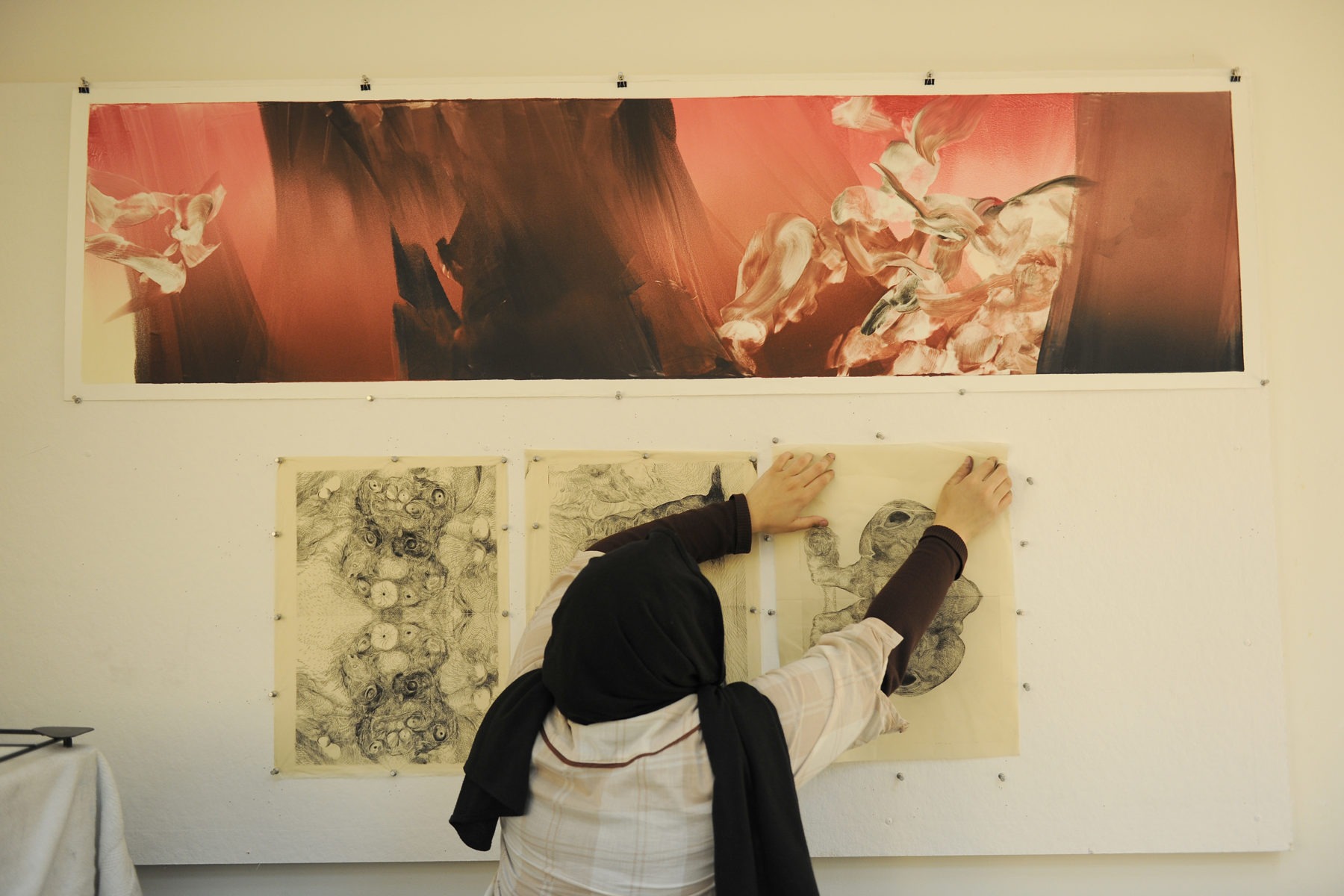
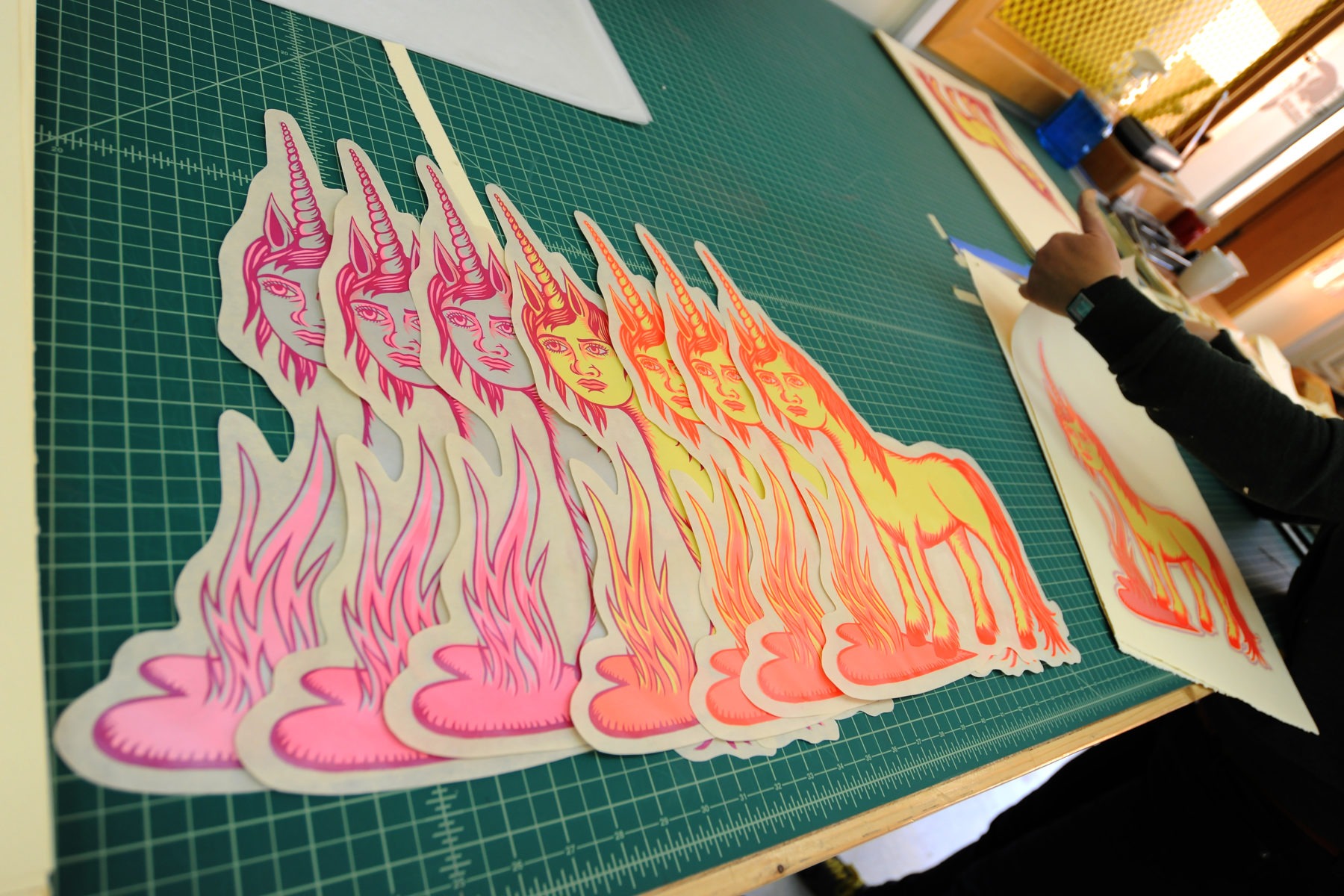
Similarly, the project with Trenton Doyle Hancock provided an experience previously unfamiliar to the artist and enables his work to take a new direction. Hancock’s practice predominantly involved drawing and painting and for many years the artist had been building a collection of children’s toys. Interested in developing designs to produce his own set of toys, Hancock was initially interested in working with 3D printing to output toys in plastic. Upon seeing samples from our digital fabrication facility, Hancock was drawn to pieces made with our vacuum former, a technology that heats plastic before creating a vacuum and sucking the plastic onto a pre-made mold to produce a reprographic form. The machine is used for many applications, including the prototyping of designs and the production of product packaging. In Hancock’s case, he was interested in using it to develop Halloween masks, a set of which he had been collecting and, by chance, were made through a very similar methodology. Through working in our studios and collaborating with our master printer, technicians, student workers and volunteers, works were made which took Hancock’s drawings, produced three-dimensional sculptural molds and then vacuum-formed screen-printed plastic to create masks based on the artist’s anti-hero ‘Torpedo Boy’.
If these projects emphasize the way in which artists associated with a medium outside of print can transform both their practice and printmedia itself, they also serve to emphasize the way in which technologies within print that span different centuries and even millennia, can be integrated through a work of art. With the work of Ranjani Shettar, perhaps the oldest print technology of the woodcut is combined with one of the newest in the form of a laser cutter, both of which acting in a reductive manner, albeit through different means. With Hancock’s work the technology, in this case one used in packaging, is synonymous with that of print media over the centuries, an industrial process or tool, utilized by the artist to create work within the language of the multiple. A means to critique industrial society from within. This is combined with a more familiar print medium, that of the screen-print, itself a technology still used in the production of packaging, credit cards, and circuit boards. And so continues a tradition which unites the many media of print: taking an industrial process to interrogate it, appropriate its vernacular and to merge it with the will and hand of the artist to create a unique expression.
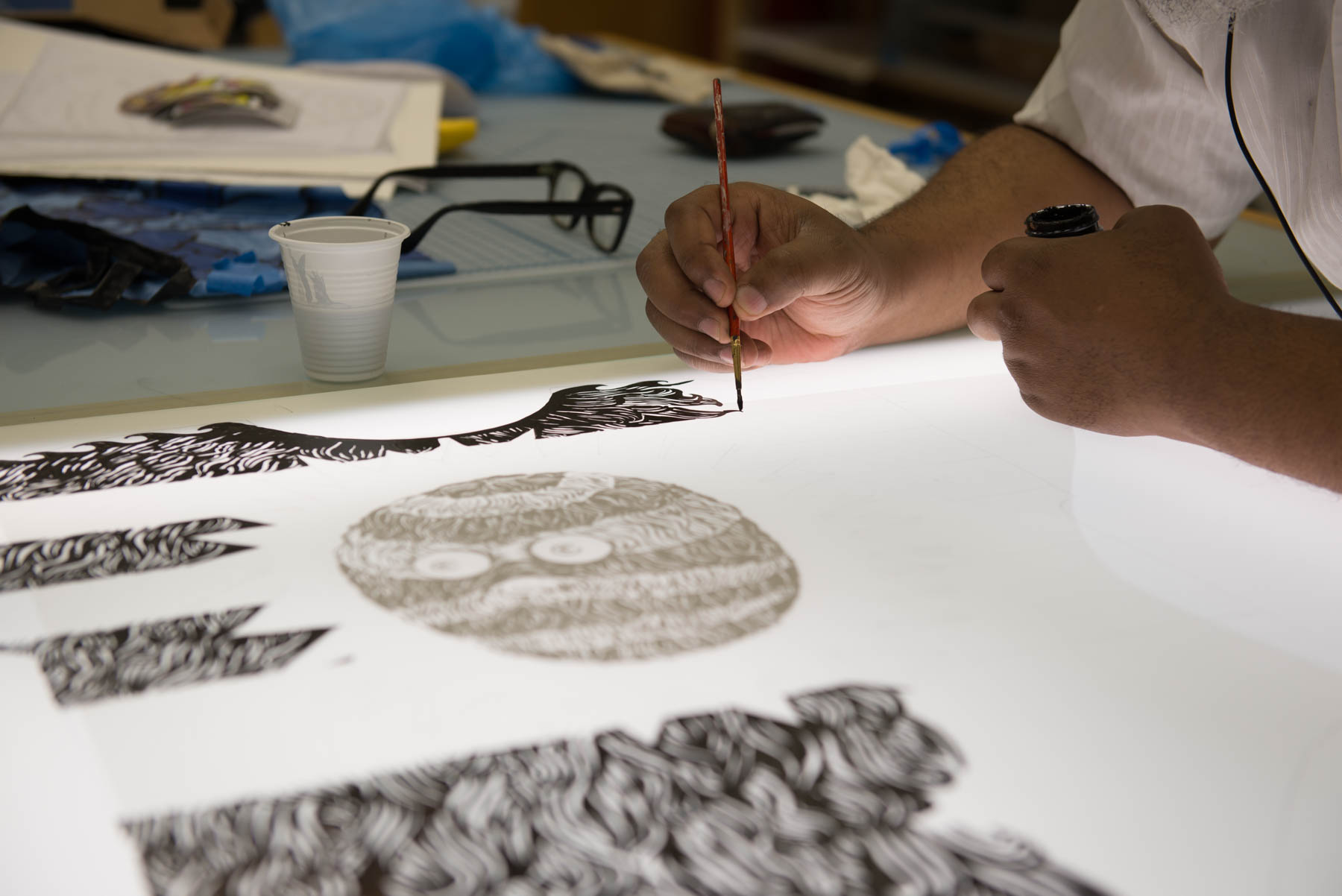

Another critical factor in distinguishing Fanoon is the way in which it actively involves students in the realization of projects. This happens both directly and indirectly. By locating the center within the department of Painting and Printmaking, Fanoon occupies the same space and equipment as that of the students and faculty. In doing so, a unique environment that facilitates a cross-pollination of ideas occurs where students are learning how to see themselves as artists alongside visiting artists who are problem solving real world projects. The invited artists range from those who may have recently graduated from a Masters program, artists who also have teaching, writing or curatorial practices, to artists whose work may be well known within the context of major museums and institutions. This rich array of artistic perspectives and experiences combined with varying levels of printmedia knowledge make for an interesting set of examples of how to thrive as an artist, examples of which are of enormous value to our students.
As well as acting as a living examples for the variety of ways in which artists approach their work, the projects at Fanoon take advantage of the collaborative and process-oriented aspect of print. Student volunteers are given the opportunity to work as assistants for what can sometimes be complex projects involving a production line style of working. The numerous prints, folds, and stacks of the work of Jason Urban, for example, the participatory work of John Freyer that required an entire audience of sixty people to be realized, or to return to Ranjani Shettar, the six-meter-long scroll that required a team of eight people working in tandem over an etching press in complete synchronization to ensure the elongated work could be printed in one continuous loop. At other times, the artist’s work is much more solitary, as is the case with the work of Shahzia Sikander or Mary Laube: the slow meditative process of drawing onto a copper plate or the detailed and methodical tracing of geometric lines to form a stencil, acting not only as tools for the technical aspects of the work, but an agent of the contemplation and meditation that is requisite for some artists in order for the work to be realized.
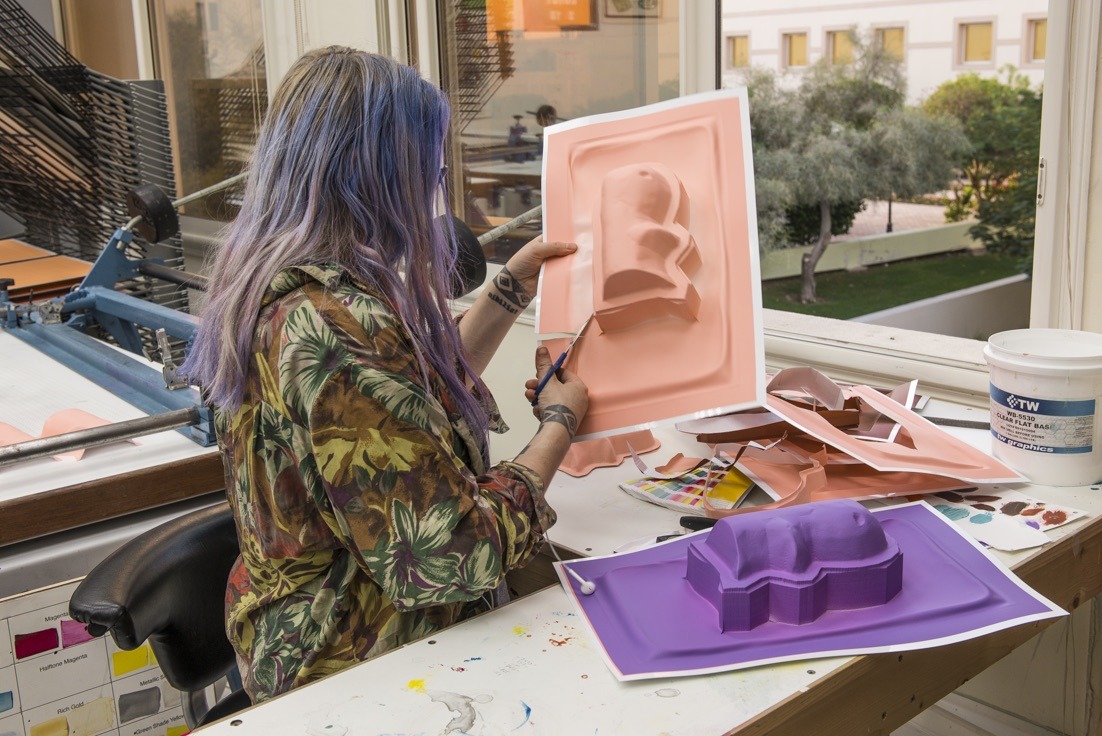
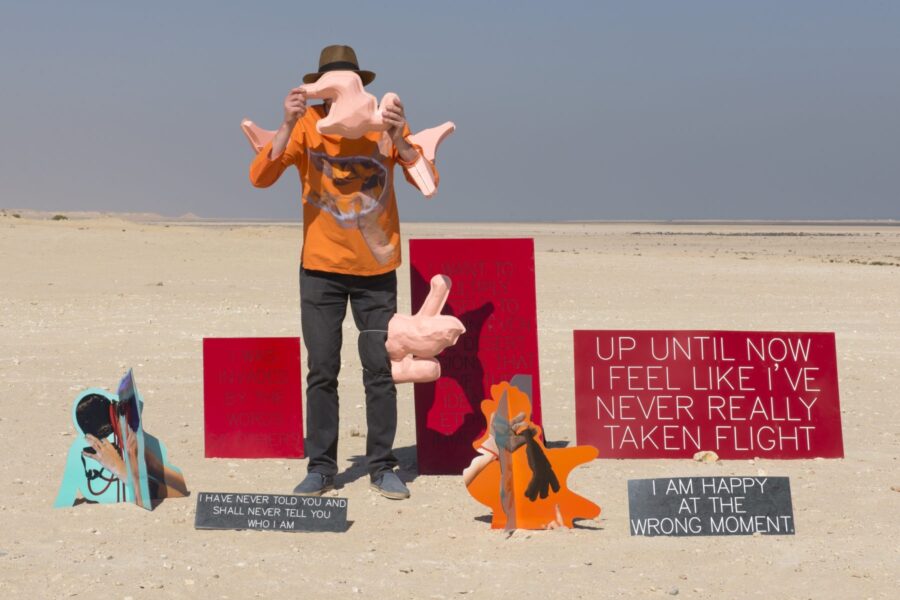
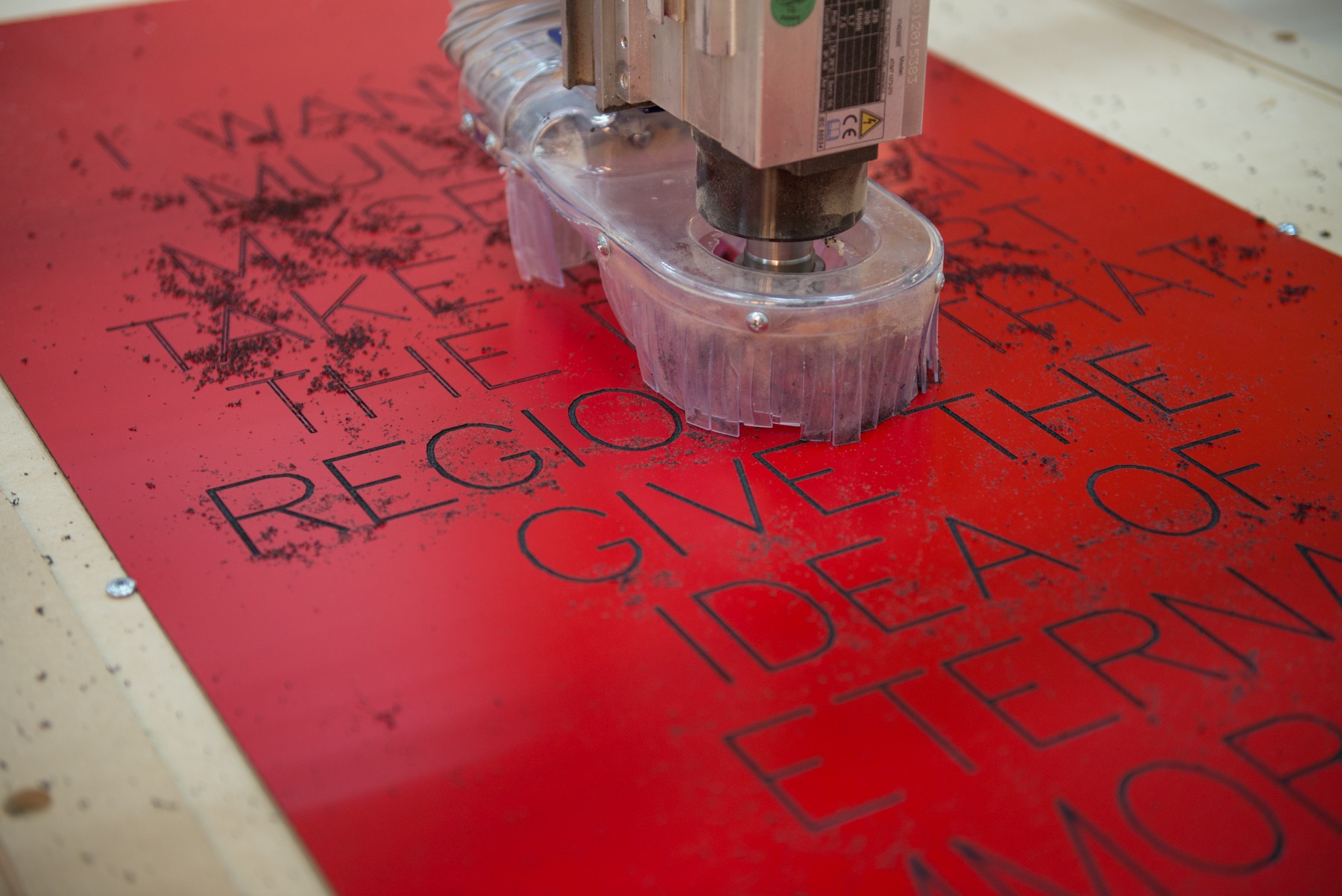
The collection includes work by local, regional and international artists from a range of backgrounds and at different stages in their careers. In addition, as a US branch campus, we’ve endeavored to build bridges with our counterparts and share broader perspectives with our students by inviting artists from our Richmond campus. In producing and documenting this collection of works that explore the role and significance of print in contemporary culture, we aim to develop and sustain a legacy that will compliment other local institutions; in doing so, we play our role in creating a cultural hub for artistic practices rooted in Doha. As printmaking enters a new phase in the medium’s history – which spans the Gutenberg press through to the internet of things – we hope Fanoon can not only contribute to the work of artists, but also make a case for print’s significance in the 21st century.
Return to the exhibition page here.
Rhys Himsworth received his Bachelor of Fine Arts in Fine Art from Central Saint Martins College of Art and Design in 2003 and his Master of Arts in Printmaking from the Royal College of Art in 2009. From 2011–2018 he served as the Director of Painting + Printmaking at VCUarts Qatar, where he headed up the first fine art program in the country’s history and, together with his colleagues, founded Fanoon: Center For Printmedia Research. He also oversaw and coordinated the university’s artist-in-residence program. Himsworth has been a visiting lecturer at Central Saint Martins College of Art and Design and at the University of Hertfordshire in the UK, the University of São Paulo, Brazil and the School of The Art Institute of Chicago in the U.S. He has exhibited extensively in Europe, North America and the Middle East, including solo shows at Reynolds Gallery in Richmond, Virginia, Entropy in Doha, Qatar, and Monoliths at CICA Museum, Seoul, South Korea. He also took part in the biennial ‘Locws International’ in Swansea, UK, 2011, and the India Art Fair in New Delhi in 2015.